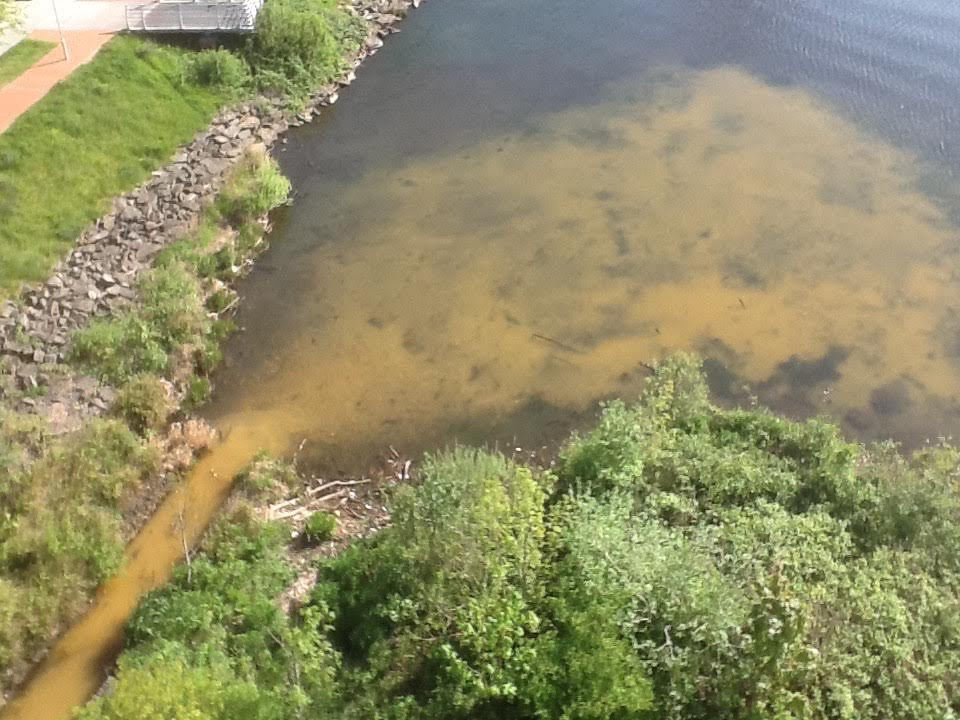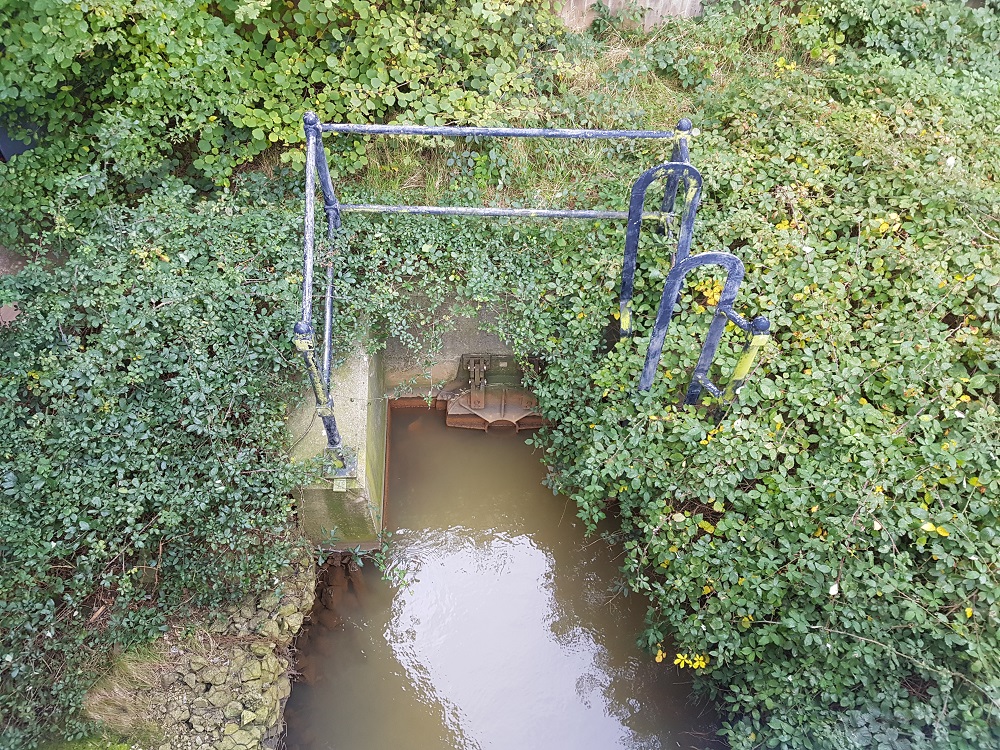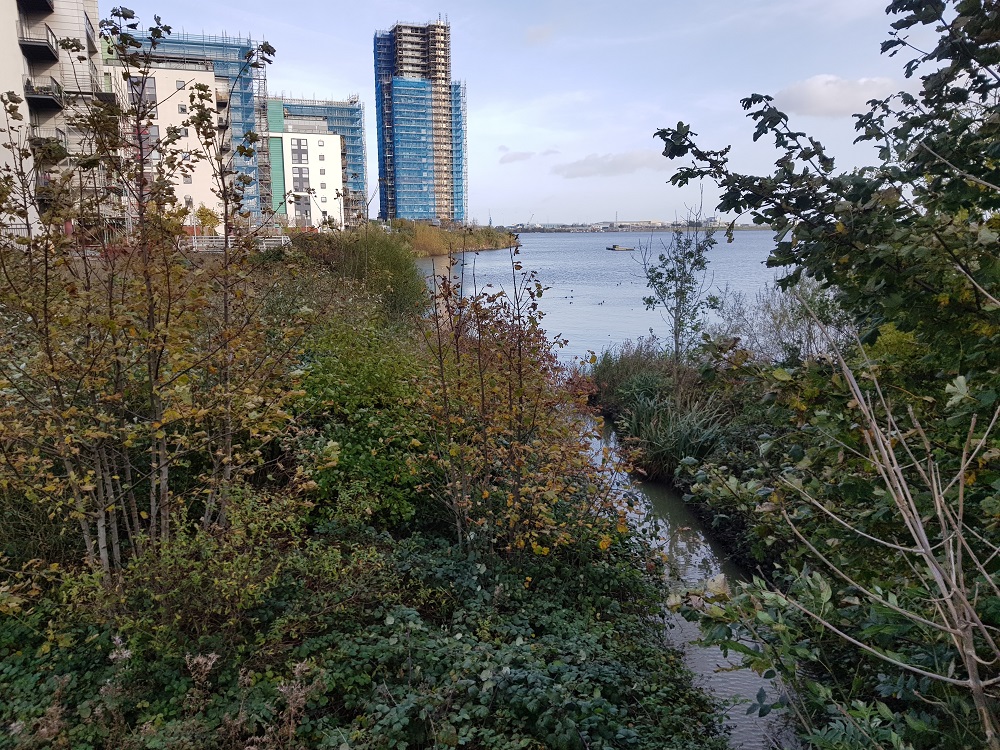Four years of delays in stopping landfill pollution from leaking into Cardiff Bay

Alex Seabrook, local democracy reporter
Work to stop landfill pollution leaking into Cardiff Bay and the River Ely has been delayed by more than four years.
Cardiff council was repeatedly warned since January 2017 about an underground pipe discharging pollution into the bay, including oily film, muddy water and brown sludge.
One councillor officer in February 2017 wrote to a resident who witnessed the discharges, admitting it was likely from an old leachate, water heavily contaminated by rotting rubbish, drain.
Despite this, contaminated water from the former landfill at Ferry Road has been allowed to pollute the bay and the river Ely, and work is still ongoing to solve the problem.
The giant landfill in Grangetown closed in 1994, after taking in about four million cubic metres of rubbish. The site was then turned into Grangemoor Park and the Cardiff Bay Retail Park. Earlier this year, an inspection by Natural Resources Wales (NRW) found leachate was leaking out from the landfill.
The inspectors said the problem appeared to be caused by a faulty pumping station, meant to pump the leachate out of the landfill and prevent any leaks. They claimed council staff responsible for operating the site didn’t know what the pumping station was for. The inspection was prompted by reports from a resident at the International Sports Village.
Rob Jones lives at the Watermark building at the southern end of Ferry Road, looking out over the bay. A culvert goes underneath the building and releases water into the bay. Dr Jones said he phoned and emailed the Cardiff Harbour Authority, a council department, in January 2017 after spotting pollution coming out of the culvert.

The email said: “On January 30 I reported by phone what appeared to be an oily film on the water by the ditch flowing into the bay by the Watermark building. I have no idea if this provoked any investigation, as in spite of the promise that someone would get back to me, regrettably nobody did.”
‘Reply’
The next month he received a reply from one council officer, who suggested that the culvert could be a “redundant leachate drain”.
He said: “If it’s the pipe I’m thinking of, it’s a redundant leachate drain belonging to Welsh Water. It was connected to a pumping station that was removed about 15 years ago. I suspect the rubbish is windblown, all of that elevation suffers from a build-up of rubbish from the westerly winds. I’m due to be on site tomorrow, I’ll take a walk in that direction and have a look.”
More details of the history of the landfill, and its potential impact of the pollution, surfaced in the summer of that year, and Dr Jones wrote to a second council officer with these details.
He said: “There was a branch of the Ely river just adjacent to the Watermark, which was infilled with rubbish by the council when they diverted the river during construction.
“The tipping in those days was unregulated and there have been problems with chemicals leaching out of the old docks. The infilled section of the Ely is suspected by local people to be a potential danger, as the old riverbed filled with rubbish would be a natural conduit of water from the Ely to leach any chemical along its previous track, and this could be what is emerging from the redundant pipe into the bay.”
Months later, in April 2018, pollution was still coming out of the culvert by the Watermark, including “a fair quality of brown sludge”. Dr Jones again wrote to the second council officer.
He said: “You may remember I contacted you about a year ago, about the rubbish which ends up around our building, and the concern that the redundant leachate pipe that discharges into the bay by the building was a possible cause.
“This morning I filmed the pipe discharging brown sludge and a raft of rubbish down the culvert into the bay. This coupled with the sanitary products we have found on the bank at the mouth of the culvert suggests the cause.
“On Sunday, the culvert next to Watermark burst into life discharging a fair quantity of brown sludge and a mass of plastic litter. We had noticed tampons in the debris in the bank as well as the odd syringe.”

The reply from the council officer suggested the problem was under urgent investigation. She said: “As before, if you have concerns about this culvert, please contact NRW who may decide to investigate. Rest assured that Cardiff Harbour Authority shares your concerns and I am investigating this as a matter of urgency. I have also contacted NRW myself this morning.”
‘Mildly toxic’
By the end of 2018, the pollution was still coming out of the culvert. Dr Jones again wrote to the council officer, saying: “The rubbish continues to collect and seems to be coming from the culvert itself. The discharge investigations are still ongoing with NRW describing it as mildly toxic, possibly from one of the old landfill sites nearby.”
NRW inspectors visited the site in spring this year, and warned the council it was significantly breaching the landfill’s environment permit.
The council said it is working hard to solve the problem, but its efforts have been hampered by inaccurate maps of the complex network of pipes and drains around the area. Huge dirt tracks have also recently appeared through Grangemoor Park, to improve access for workers carrying out maintenance on the landfill throughout the winter.
A council spokesperson said: “The council has been working with NRW investigating reports of small-scale incidents which see materials discharged into the bay occasionally, generally during or after extreme rainfall events.
“While we have been advised by a leading engineering consultancy—which considers ‘due to the dilution in the bay the impact of these discharges will not be extensive and would be categorised as a low (minor) impact incident’—we have been working to find the cause and to look at options to stop this happening.
“The area in question sees a large, complex, network of pipes laid through what was once a heavily-industrialised area and then a major landfill site. These pipes, which were not laid by the council, are fed by storm drains, businesses, and homes and are designed to remove surface water and foul water.
“Our investigations have been hampered by drain maps, given to the council when it took over the landfill site from Cardiff Bay Development Corporation, which contain several inaccuracies.
“We are narrowing down potential causes, but this is a complicated issue and we cannot rule out that pipes laid through such contaminated land many years ago could, by now, be allowing small amounts of leachate to enter the surface-water network and that this is being picked up and flushed through when storm drains are full.
“We are working with NRW to provide them with a landfill management plan to ensure appropriate measures are put in place, once the source of the problem is located.”
Support our Nation today
For the price of a cup of coffee a month you can help us create an independent, not-for-profit, national news service for the people of Wales, by the people of Wales.





God help Cardiff if the landfill in dowlais start’s leaking
Are they still dumping the nuclear plant sludge there?
COP 26? More like COP out.
I think many local authorities have spent more than 4 years with their heads firmly in the sand. I’ve lived in Carmarthenshire for 25 years and have plenty of examples of neglect of chronic pollution incidents. These pollution events are all too common. In Carmarthenshire the local County Council are even trying to offload their own liability by inviting developers to build houses on contaminated sites such as the Grillo Factory near Burry Port where zinc oxide was produced. The ground and the drainage are polluted by heavy metals. The County Council clearly hopes that a developer will appear and… Read more »